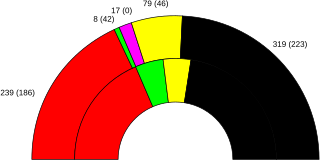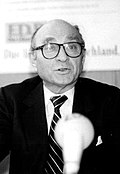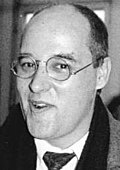| ||||||||||||||||||||||||||||||||||||||||||||||||||||||||||||||||||||||||||||||||||
| ← outgoing memberselected members → | ||||||||||||||||||||||||||||||||||||||||||||||||||||||||||||||||||||||||||||||||||
All 662 seats in the Bundestag 332 seats needed for a majority | ||||||||||||||||||||||||||||||||||||||||||||||||||||||||||||||||||||||||||||||||||
|---|---|---|---|---|---|---|---|---|---|---|---|---|---|---|---|---|---|---|---|---|---|---|---|---|---|---|---|---|---|---|---|---|---|---|---|---|---|---|---|---|---|---|---|---|---|---|---|---|---|---|---|---|---|---|---|---|---|---|---|---|---|---|---|---|---|---|---|---|---|---|---|---|---|---|---|---|---|---|---|---|---|---|
| Registered | 60,436,560 ( | |||||||||||||||||||||||||||||||||||||||||||||||||||||||||||||||||||||||||||||||||
| Turnout | 77.8% ( | |||||||||||||||||||||||||||||||||||||||||||||||||||||||||||||||||||||||||||||||||
| ||||||||||||||||||||||||||||||||||||||||||||||||||||||||||||||||||||||||||||||||||
 The left side shows constituency winners of the election by their party colours. The right side shows party list winners of the election for the additional members by their party colours. The left side shows constituency winners of the election by their party colours. The right side shows party list winners of the election for the additional members by their party colours. | ||||||||||||||||||||||||||||||||||||||||||||||||||||||||||||||||||||||||||||||||||
| ||||||||||||||||||||||||||||||||||||||||||||||||||||||||||||||||||||||||||||||||||
| This article is part of a series on the |
| Politics of Germany |
|---|
 |
| Constitution (Basic Law) |
| Head of State |
|
Executive
|
|
Legislature
|
Judiciary
|
|
Subdivisions
|
Elections
|
State and local politics
|
Foreign relations
|
|
Political ideologies
|
Federal elections were held in recently united Germany on 2 December 1990 to elect the members of the 12th Bundestag, within the regular time of nearly four years after the January 1987 West German federal election. Due to the accession of the former East German states on 3 October, after which the Bundestag was expanded with East German Volkskammer delegates, the elections were first democratic all-German elections since the early 1930s.
The result was a comprehensive victory for Chancellor Helmut Kohl and his governing coalition of the Christian Democratic Union/Christian Social Union and the Free Democratic Party (FDP), which was reelected to a third term (and a fourth in 1994). The second vote (preferred national party, first vote is for a local candidate) result of the CDU/CSU, 20,358,096 votes, remains the highest ever total vote count in a democratic German election.
The elections marked the first since 1957 that a party other than CDU/CSU and the Social Democratic Party (SPD) won a constituency seat (Direktmandat), breaking up the dominance of the two Volksparteien. The first (and only) time since 1957 that FDP won a constituency seat was by Uwe Lühr in Halle, home of Hans-Dietrich Genscher, the "architect of German reunification". In addition, Gregor Gysi (PDS) won Berlin-Marzahn – Hellersdorf.
Campaign
This was the first election conducted after German reunification which took place on 3 October. Previously, the Volkskammer had selected 144 of its members which were then co-opted as Members of the German Bundestag and served until the end of the 11th Bundestag.
Almost 150 seats had been added to represent the re-established eastern states of Germany, without reducing the number of western members. The euphoria following the reunification gave the ruling CDU/CSU–FDP coalition a dramatic advantage in both Western and Eastern Germany throughout the campaign.
It was the one election for which the 5% threshold was applied not nationwide but separately for the former East Germany (including East Berlin) and former West Germany (including West Berlin). As a result, while the Western Greens did not gain representation, their ideologically-similar Eastern Alliance 90 did, with both merging to form Alliance 90/The Greens in 1993. The combined vote of the two lists totals over 5%, but as the two lists would not merge until 1993, it thus did not entitle the East German party to any elected members from the former West Germany, unlike the PDS, which managed to elect Ulla Jelpke in North Rhine-Westphalia.
The German Social Union (DSU) under leader Hansjoachim Walther, a right-wing party modeled after the Bavarian CSU running only in former East Germany, failed to achieve the separate 5% threshold, only receiving around 1% of the vote in the eastern states, mostly in the southeast. As part of the co-option, the DSU had previously had eight Members of the Bundestag, who sat as guests in the CDU/CSU caucus. The CSU, which had heavily supported the DSU financially, severed its ties in 1993 and the party fell into irrelevancy. After a law allowing a linkage of the lists of the CSU and DSU was overturned by the Federal Constitutional Court, the CSU tried to convince the CDU to stand down in several single-member constituencies to enable the DSU to enter the Bundestag separate from the 5% threshold, but Kohl adamantly refused.
Results
All change figures are relative to the pre-existing West German Bundestag.
 | |||||||||
|---|---|---|---|---|---|---|---|---|---|
| Party | Party-list | Constituency | Total seats | +/– | |||||
| Votes | % | Seats | Votes | % | Seats | ||||
| Christian Democratic Union | 17,055,116 | 36.71 | 76 | 17,707,574 | 38.27 | 192 | 268 | +83 | |
| Social Democratic Party | 15,545,366 | 33.46 | 148 | 16,279,980 | 35.18 | 91 | 239 | +46 | |
| Free Democratic Party | 5,123,233 | 11.03 | 78 | 3,595,135 | 7.77 | 1 | 79 | +31 | |
| Christian Social Union | 3,302,980 | 7.11 | 8 | 3,423,904 | 7.40 | 43 | 51 | +2 | |
| The Greens (West) | 1,788,200 | 3.85 | 0 | 2,037,885 | 4.40 | 0 | 0 | −44 | |
| Party of Democratic Socialism | 1,129,578 | 2.43 | 16 | 1,049,245 | 2.27 | 1 | 17 | New | |
| The Republicans | 987,269 | 2.13 | 0 | 767,652 | 1.66 | 0 | 0 | New | |
| Alliance 90/Greens – Citizens' Movement (East) | 559,207 | 1.20 | 8 | 552,027 | 1.19 | 0 | 8 | New | |
| The Grays – Gray Panthers | 385,910 | 0.83 | 0 | 218,412 | 0.47 | 0 | 0 | New | |
| Ecological Democratic Party | 205,206 | 0.44 | 0 | 243,469 | 0.53 | 0 | 0 | 0 | |
| National Democratic Party | 145,776 | 0.31 | 0 | 190,105 | 0.41 | 0 | 0 | 0 | |
| German Social Union | 89,008 | 0.19 | 0 | 131,747 | 0.28 | 0 | 0 | New | |
| Christian League | 39,640 | 0.09 | 0 | 8,667 | 0.02 | 0 | 0 | New | |
| Christian Centre | 36,446 | 0.08 | 0 | 9,824 | 0.02 | 0 | 0 | New | |
| Bavaria Party | 31,315 | 0.07 | 0 | 10,836 | 0.02 | 0 | 0 | 0 | |
| The Women | 12,077 | 0.03 | 0 | 1,433 | 0.00 | 0 | 0 | 0 | |
| Patriots for Germany | 4,687 | 0.01 | 0 | 746 | 0.00 | 0 | 0 | 0 | |
| Eco-Union | 4,661 | 0.01 | 0 | 1,106 | 0.00 | 0 | 0 | 0 | |
| Union of Working Groups for Employee Politics and Democracy | 4,530 | 0.01 | 0 | 704 | 0.00 | 0 | 0 | New | |
| Communist Party of Germany | 1,630 | 0.00 | 0 | 0 | New | ||||
| Spartacist Workers' Party of Germany | 1,610 | 0.00 | 0 | 124 | 0.00 | 0 | 0 | New | |
| Federation of German Democrats | 1,009 | 0.00 | 0 | 474 | 0.00 | 0 | 0 | New | |
| Federation of Socialist Workers | 826 | 0.00 | 0 | 214 | 0.00 | 0 | 0 | New | |
| Responsible Citizens | 492 | 0.00 | 0 | 72 | 0.00 | 0 | 0 | 0 | |
| European Federalist Party | 266 | 0.00 | 0 | 0 | New | ||||
| Independents and voter groups | 43,324 | 0.09 | 0 | 0 | 0 | ||||
| Total | 46,455,772 | 100.00 | 334 | 46,274,925 | 100.00 | 328 | 662 | +143 | |
| Valid votes | 46,455,772 | 98.85 | 46,274,925 | 98.47 | |||||
| Invalid/blank votes | 540,143 | 1.15 | 720,990 | 1.53 | |||||
| Total votes | 46,995,915 | 100.00 | 46,995,915 | 100.00 | |||||
| Registered voters/turnout | 60,436,560 | 77.76 | 60,436,560 | 77.76 | |||||
| Source: Bundeswahlleiter | |||||||||


Results by state
Second vote (Zweitstimme, or votes for party list)
| State | CDU/CSU | SPD | FDP | Grüne | PDS | REP | Others |
|---|---|---|---|---|---|---|---|
| 46.5 | 29.1 | 12.3 | 5.7 | 0.3 | 3.2 | 2.9 | |
| 51.9 | 26.7 | 8.7 | 4.6 | 0.2 | 5.0 | 2.9 | |
| 39.4 | 30.6 | 9.1 | 7.2 | 9.7 | 2.5 | 0.7 | |
| 36.3 | 32.9 | 9.7 | 6.6 | 11.0 | 1.7 | 1.8 | |
| 30.9 | 42.5 | 12.8 | 8.3 | 1.1 | 2.1 | 2.3 | |
| 36.6 | 41.0 | 12.0 | 5.8 | 1.1 | 1.7 | 1.8 | |
| 41.3 | 38.0 | 10.9 | 5.6 | 0.4 | 2.1 | 1.7 | |
| 44.3 | 38.4 | 10.3 | 4.5 | 0.3 | 1.0 | 1.2 | |
| 41.2 | 26.5 | 9.1 | 5.9 | 14.2 | 1.4 | 1.7 | |
| 40.5 | 41.1 | 11.0 | 4.3 | 0.3 | 1.3 | 1.5 | |
| 45.6 | 36.1 | 10.4 | 4.0 | 0.2 | 1.7 | 2.0 | |
| 38.1 | 51.2 | 6.0 | 2.3 | 0.2 | 0.9 | 1.3 | |
| 49.5 | 18.2 | 12.4 | 5.9 | 9.0 | 1.2 | 3.8 | |
| 38.6 | 24.7 | 19.7 | 5.3 | 9.4 | 1.0 | 1.3 | |
| 43.5 | 38.5 | 11.4 | 4.0 | 0.3 | 1.2 | 1.1 | |
| 45.2 | 21.9 | 14.6 | 6.1 | 8.3 | 1.2 | 2.7 | |
| Old states (West) | 44.3 | 35.7 | 10.6 | 4.8 | 0.3 | 2.3 | 2.0 |
| New states (East) | 41.8 | 24.3 | 12.9 | 6.2 | 11.1 | 1.5 | 2.3 |
Constituency seats
| State | Total seats |
Seats won | ||||
|---|---|---|---|---|---|---|
| CDU | SPD | CSU | FDP | PDS | ||
| Baden-Württemberg | 37 | 36 | 1 | |||
| Bavaria | 45 | 2 | 43 | |||
| Berlin | 13 | 8 | 4 | 1 | ||
| Brandenburg | 12 | 7 | 5 | |||
| Bremen | 3 | 3 | ||||
| Hamburg | 7 | 1 | 6 | |||
| Hesse | 22 | 13 | 9 | |||
| Lower Saxony | 31 | 20 | 11 | |||
| Mecklenburg-Vorpommern | 9 | 8 | 1 | |||
| North Rhine-Westphalia | 71 | 33 | 38 | |||
| Rhineland-Palatinate | 16 | 12 | 4 | |||
| Saarland | 5 | 5 | ||||
| Saxony | 21 | 21 | ||||
| Saxony-Anhalt | 13 | 12 | 1 | |||
| Schleswig-Holstein | 11 | 9 | 2 | |||
| Thuringia | 12 | 12 | ||||
| Total | 328 | 192 | 91 | 43 | 1 | 1 |
List seats
| State | Total seats |
Seats won | |||||
|---|---|---|---|---|---|---|---|
| SPD | FDP | CDU | PDS | CSU | B90/Gr. | ||
| Baden-Württemberg | 36 | 23 | 10 | 3 | |||
| Bavaria | 41 | 24 | 9 | 8 | |||
| Berlin | 15 | 5 | 3 | 4 | 2 | 1 | |
| Brandenburg | 10 | 2 | 2 | 1 | 3 | 2 | |
| Bremen | 3 | 1 | 2 | ||||
| Hamburg | 7 | 2 | 5 | ||||
| Hesse | 26 | 11 | 6 | 9 | |||
| Lower Saxony | 34 | 16 | 7 | 11 | |||
| Mecklenburg-Vorpommern | 7 | 3 | 1 | 2 | 1 | ||
| North Rhine-Westphalia | 75 | 27 | 17 | 30 | 1 | ||
| Rhineland-Palatinate | 18 | 9 | 4 | 5 | |||
| Saarland | 6 | 1 | 1 | 4 | |||
| Saxony | 19 | 8 | 5 | 4 | 2 | ||
| Saxony-Anhalt | 13 | 6 | 4 | 2 | 1 | ||
| Schleswig-Holstein | 13 | 8 | 3 | 2 | |||
| Thuringia | 11 | 5 | 3 | 2 | 1 | ||
| Total | 334 | 148 | 78 | 76 | 16 | 8 | 8 |
Post-election
The governing CDU/CSU-FDP coalition was returned to office with a landslide majority, and Helmut Kohl remained chancellor. The CDU did exceptionally well in the former East Germany, which had been the heartland of the SPD before the Nazi era.
Notes
- Does not include 8 German Social Union guests.
- In the 1990 election, the 5% electoral threshold was applied separately in the Western states and the new Eastern states. The PDS won 11.1% of votes in the new states.
- A linked list of the Alliance 90 and the East German Green Party, running only in the new Eastern states.
- In the 1990 election, the 5% electoral threshold was applied separately in the Western states and the new Eastern states. The Alliance 90–Eastern Greens grouping won 6.2% of votes in the new states.
- 3.9% West German Green Party, 3.3% East German Green Party/Alliance 90.
References
Sources
| Parliamentary elections | |
|---|---|
| Presidential elections | |
| European elections | |
| Referendums | |
| |



